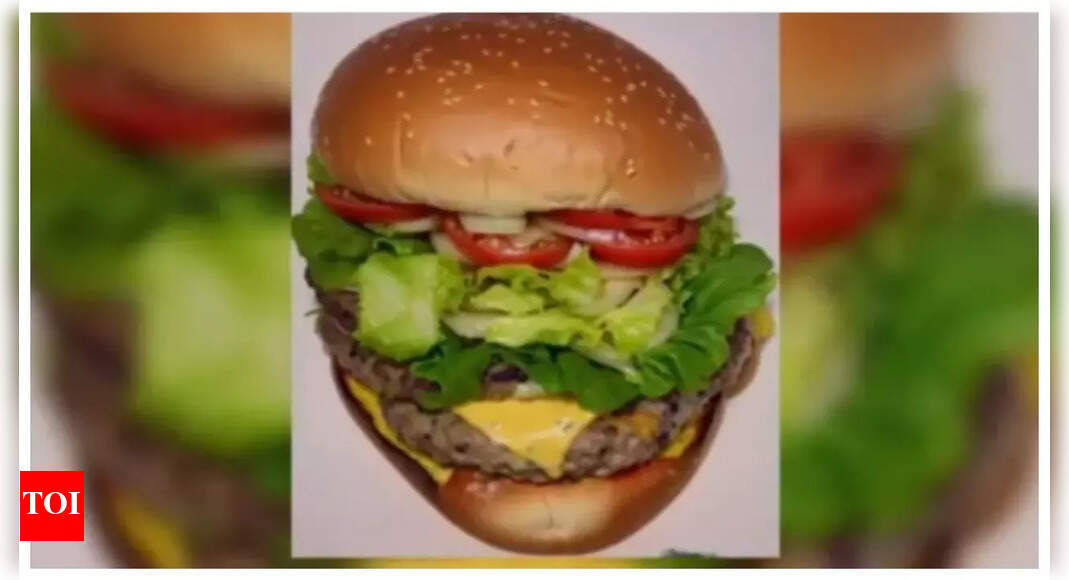Optical illusions have gained a lot of popularity recently, as they get our brain to exercise, and can be the perfect test of our observational skills and keen eye. They are also super fun to solve, and can be the perfect recipe for a bored evening! An optical illusion is actually a visual phenomenon where the brain misinterprets what the eyes perceive. It occurs when the information sent by the eyes conflicts with how the brain processes and understands what it sees. These illusions often trick us into seeing things that are not there, or perceiving objects differently from reality. For example, a still image might appear to move, or two shapes may seem unequal in size even though they are identical.Can you spot a face?Look closely at this picture. On first glance, it looks like a regular image of a massive, juicy burger. It has a sesame bun, and inside it we can see lots of vegetables, patty, tomatoes, lettuce, and even cheese. Tempting isn’t it? However, amidst the deliciousness, there is a hidden face inside the burger. Yes, that is right. Can you spot it? Look closely, but you just have 20 seconds. Get, set, go! (source: brightside)The revealGive up? There is no trick to this illusion actually – you can either spot the face, or not. If you have, congratulations, you are amongst the 1% lucky ones, if you haven’t, well, here’s the answer. The face is that of Broderick Stephen Harvey, Sr. who is an American television host, actor, writer, producer, and comedian. He hosts many shows, and is quite a popular face. Not sure how he feels about his face being turned into a popular snack though!

Types of optical illusionsThere are three main types of optical illusions:Literal Illusions: These occur when the brain combines elements of an image to create something that doesn’t exist. For example, an image might look like two faces or a vase depending on how you interpret it.Physiological Illusions: These are caused by overstimulation of the visual system, such as excessive exposure to light, movement, or color. They can create effects like afterimages or motion illusions.Cognitive Illusions: These rely on how the brain subconsciously interprets information. Examples include illusions like the Müller-Lyer illusion, where lines appear longer or shorter due to surrounding shapes.


